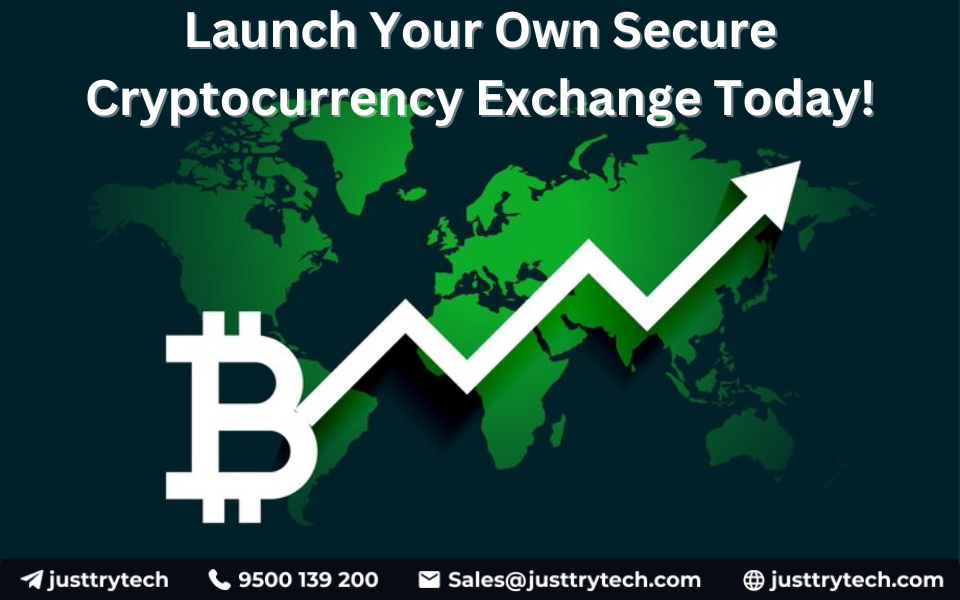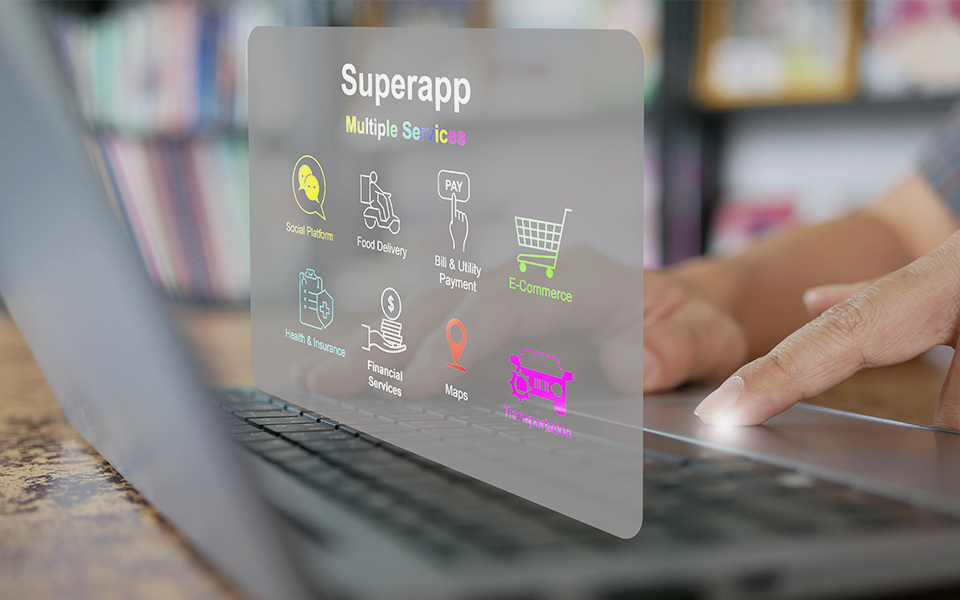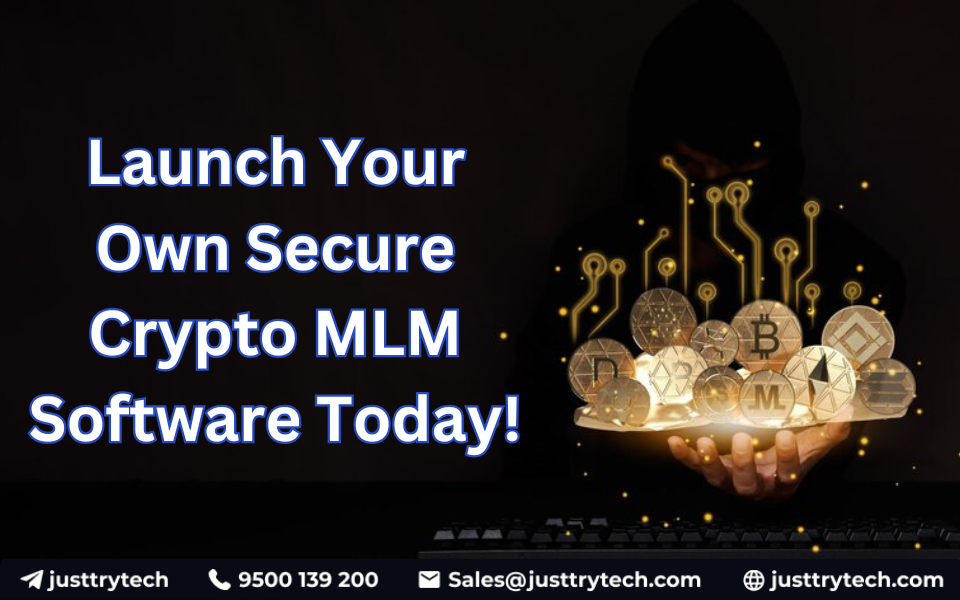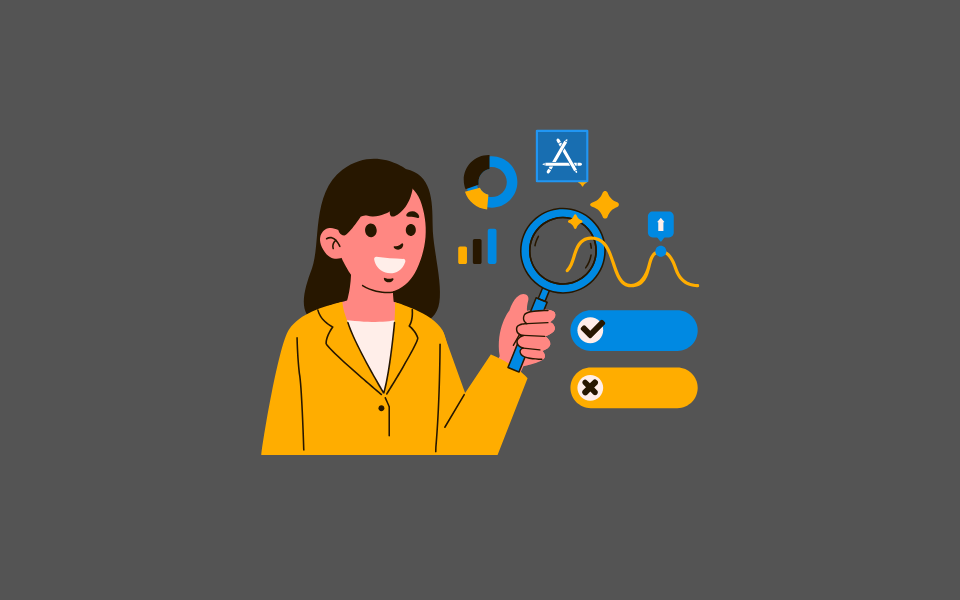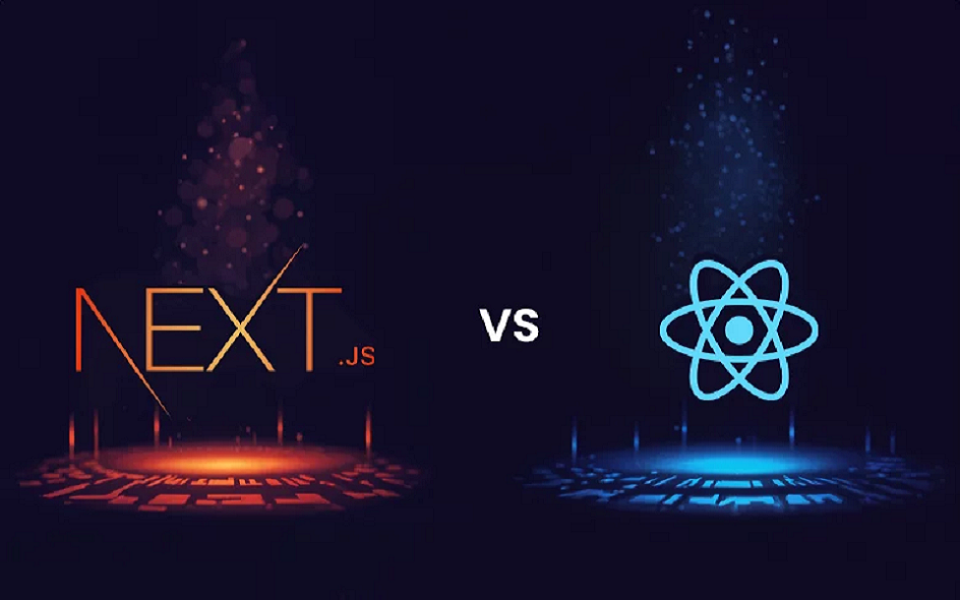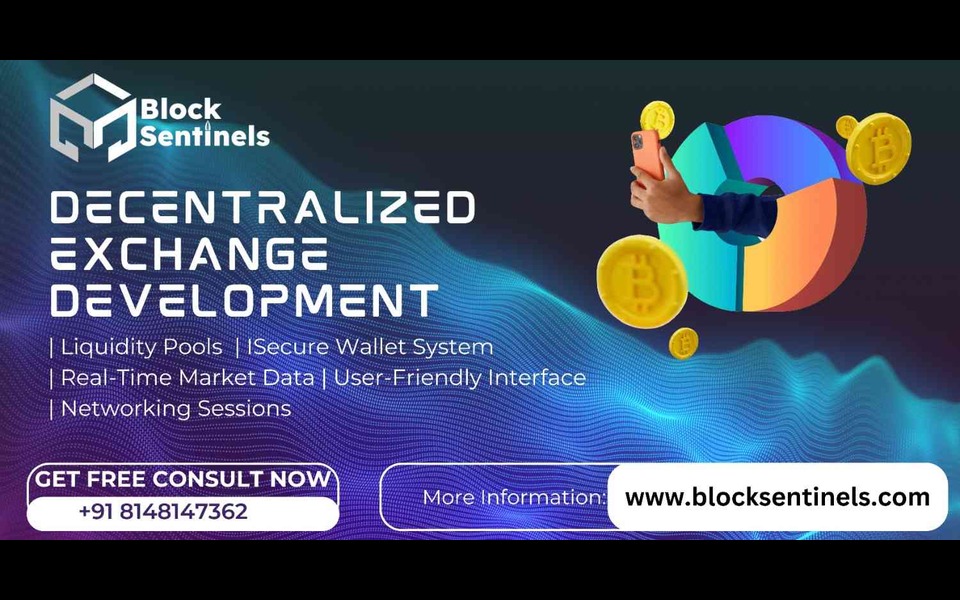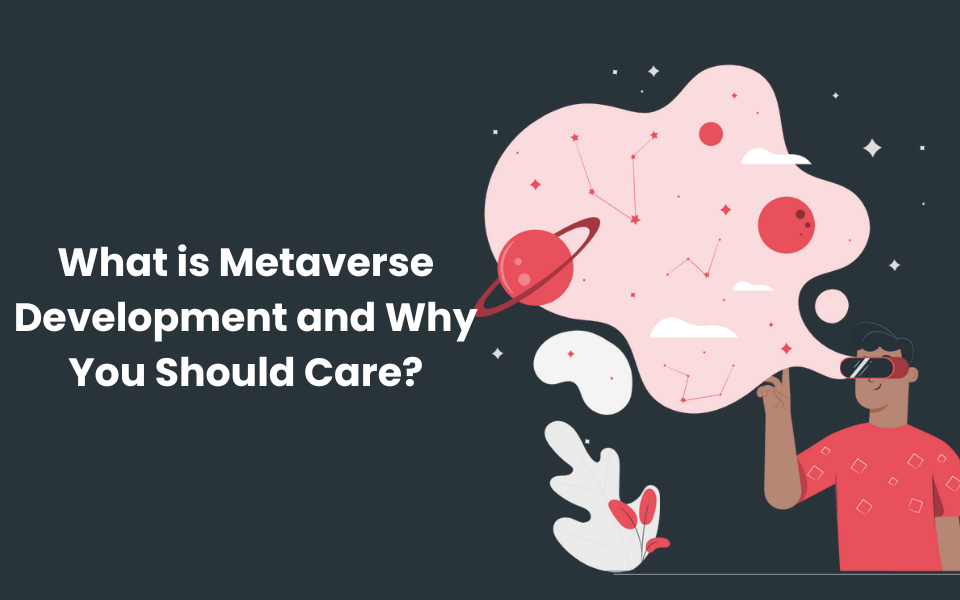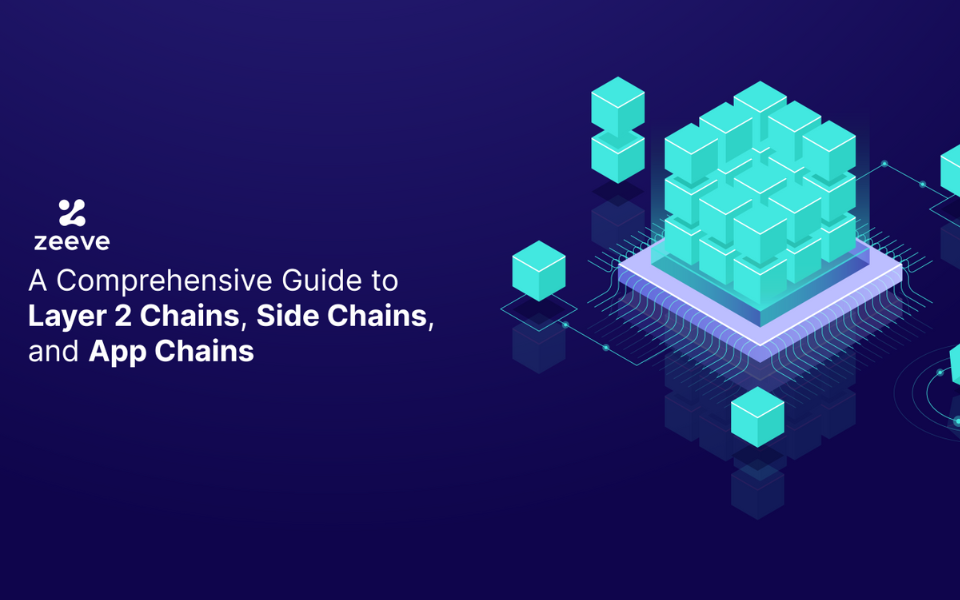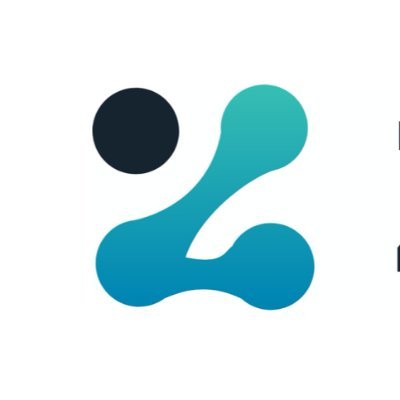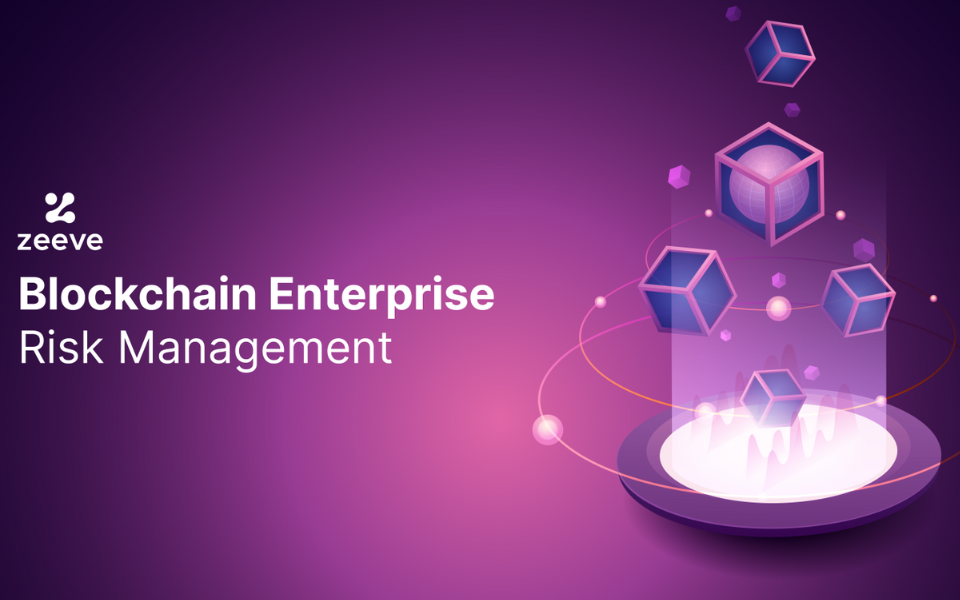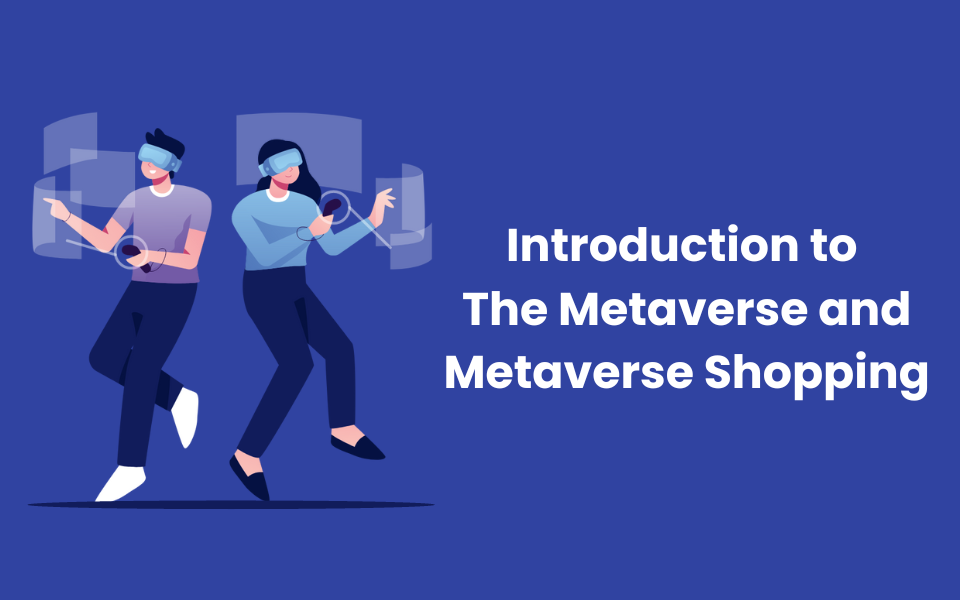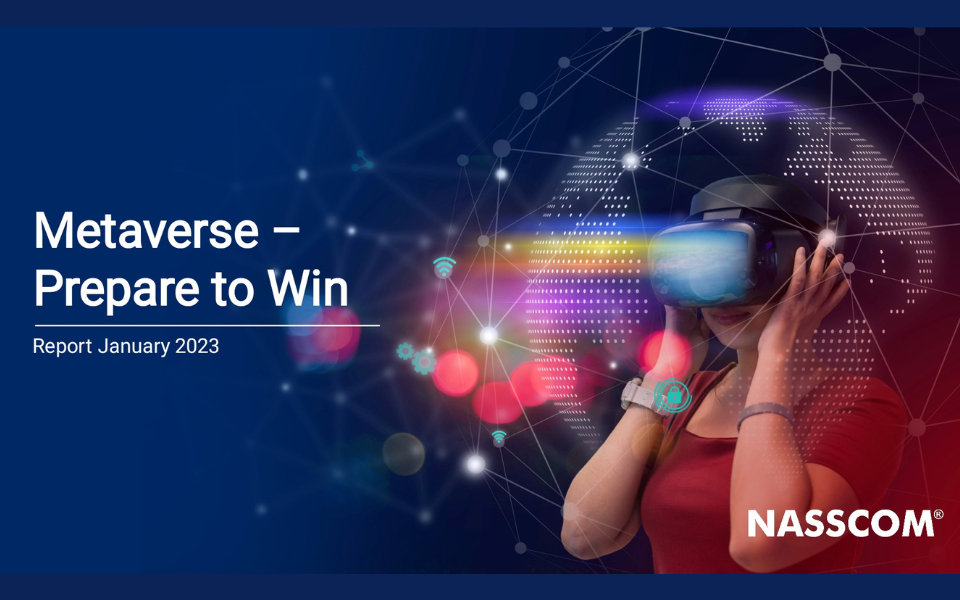Introduction to Blockchain Technology
Blockchain technology, the backbone of cryptocurrencies, has transcended its origins and become a revolutionary force in various industries. At its core, blockchain is a decentralized and distributed ledger that ensures transparency, security, and immutability of data. It operates on a peer-to-peer network, eliminating the need for intermediaries. This comprehensive guide explores the intricacies of developing blockchain applications, from understanding the fundamentals to exploring its diverse applications across sectors.
Blockchain is a distributed ledger technology that comprises a chain of blocks, each containing a record of transactions. What sets it apart is its decentralized nature, as information is stored across a network of computers, ensuring consensus and security. Essentially, it's a tamper-resistant and transparent digital ledger that has the potential to transform traditional processes by providing a trustless environment.
Blockchain development operates through a consensus mechanism where participants in the network agree on the validity of transactions. Transactions are bundled into blocks, and each block is linked to the previous one using cryptographic hashes, forming a chain. This ensures the integrity of the data, making it resistant to tampering. The decentralized network of nodes validates and records transactions, creating a secure and transparent system.
-
Key Features of Blockchain
Blockchain's key features include decentralization, immutability, transparency, and security. Decentralization eliminates the need for a central authority, reducing the risk of a single point of failure. Immutability ensures that once data is recorded, it cannot be altered. Transparency is achieved through the open and accessible ledger, and cryptographic techniques secure the data, making it resistant to unauthorized access.
Blockchain software development comes in various types, each catering to specific needs. Public blockchains are open to anyone, allowing for complete decentralization, while private blockchains restrict access, providing controlled transparency. Consortium blockchains are governed by a group of organizations, striking a balance between openness and control. Understanding these types is crucial for selecting the right framework when developing blockchain application development.
-
Use Cases for Blockchain Technology
Blockchain's applications extend beyond cryptocurrency. Industries such as finance, healthcare, supply chain management, and more are leveraging its capabilities. Smart contract development, identity verification, and transparent supply chains are just a few examples. This guide delves into these diverse use cases, offering insights into how blockchain technology can be harnessed to revolutionize processes and enhance efficiency across various domains.
Understanding Smart Contracts
Smart contract development is self-executing contracts with the terms of the agreement directly written into code. Operating on blockchain technology, they automatically enforce and execute contractual clauses when predefined conditions are met. This eliminates the need for intermediaries and enhances trust in transactions. This section provides a comprehensive exploration of smart contracts, from their definition to the platforms supporting their execution.
-
What are Smart Contracts?
Smart contract development is programmable agreements that execute automatically when predetermined conditions are fulfilled. These self-executing contracts operate on blockchain technology, ensuring transparency, security, and efficiency in various transactions. By eliminating the need for intermediaries, smart contract development streamlines processes and reduces the risk of fraud, offering a decentralized and tamper-resistant solution to traditional contract execution.
Various blockchain platforms support the execution of smart contracts. Ethereum is a pioneer in this field, enabling developers to create decentralized applications with smart contract functionality. Other platforms like Binance Smart Chain, Cardano, and Polkadot also provide environments for deploying and executing smart contracts. Understanding these platforms is crucial for developers seeking the most suitable ecosystem for their specific smart contract applications.
Coding smart contract development involves writing computer programs that define the terms and conditions of a contract. Solidity is a popular programming language for Ethereum smart contracts, offering the necessary tools for developers to create robust and secure agreements. This section explores the coding aspect of smart contract development, providing insights into the language, tools, and best practices for efficient contract development.
-
Use Cases for Smart Contracts
Smart contract development finds application in a myriad of industries, transforming traditional processes across finance, real estate, supply chain management, and more. From automated payments to decentralized applications (DApps), the use cases are diverse. This guide delves into real-world examples, illustrating how smart contracts enhance efficiency, reduce costs, and increase transparency in various sectors. Understanding these applications is essential for unlocking the full potential of smart contract technology.
Choosing the Right Blockchain Platform
Selecting the appropriate blockchain platform is a critical decision in the development of blockchain applications. This section guides developers through the considerations and characteristics of prominent platforms, aiding in informed decision-making for the optimal platform alignment with specific project requirements.
Ethereum, a pioneer in the blockchain space, is renowned for its smart contract functionality and decentralized applications (DApps). Its wide adoption and robust ecosystem make it a popular choice for developers. This section explores Ethereum's strengths, weaknesses, and suitability for different use cases.
Hyperledger blockchain development, an open-source collaborative effort hosted by the Linux Foundation, offers a range of blockchain frameworks and tools tailored for enterprise solutions. This part of the guide delves into the modular architecture of Hyperledger, its permissioned networks, and how it caters to the needs of businesses requiring private and secure blockchain solutions.
Binance Smart Chain, a blockchain network created by the Binance cryptocurrency exchange, emphasizes high throughput and low transaction costs. This section discusses its compatibility with the Ethereum Virtual Machine (EVM) and its position as an alternative for developers seeking efficiency and cost-effectiveness.
-
Other Blockchain Platforms
Beyond the aforementioned platforms, there exists a diverse array of blockchain ecosystems each with its unique features. This part of the guide sheds light on additional platforms like Cardano, Polkadot, and others, exploring their distinctive attributes and potential applications.
-
Factors to Consider in Platform Selection
Choosing the right blockchain platform involves evaluating various factors. Scalability, consensus mechanisms, developer community, security, and the platform's governance model are among the key considerations. This section provides a comprehensive overview of the factors that should influence the decision-making process, ensuring developers make informed choices aligned with project objectives and requirements.
Setting Up a Development Environment
Establishing an efficient development environment is crucial for building blockchain applications. This section guides developers through the process of setting up the necessary tools and configurations, ensuring a smooth workflow and effective application development.
-
Installing Necessary Software
Begin by installing the essential software components for blockchain development. This includes the blockchain platform of choice (such as Ethereum, Hyperledger, or Binance Smart Chain), along with associated development frameworks and libraries. This step-by-step guide provides instructions on downloading and installing the required software to kickstart the development journey.
-
Configuring Development Tools
After software installation, configuring development tools is the next critical step. Developers need integrated development environments (IDEs), code editors, and version control systems that align with the chosen blockchain platform. This section outlines the configuration process, ensuring that tools are optimized for efficient coding, debugging, and collaboration.
-
Creating a Test Blockchain Network
Before deploying applications to the live blockchain, it's essential to create and test on a local or test network. This reduces the risk of errors and allows developers to experiment without impacting the main blockchain. The guide explains how to set up a test blockchain network, providing insights into choosing the right consensus mechanism, adjusting network parameters, and ensuring a realistic development environment.
By following these steps, developers can establish a robust development environment, laying the foundation for successful blockchain application creation. The guide aims to simplify the setup process, enabling developers to focus on coding and testing without obstacles.
Programming Languages for Blockchain Development
Selecting the appropriate programming language is a pivotal decision in blockchain software development, influencing the efficiency, security, and overall success of a project. This section explores key programming languages commonly employed in blockchain development and their specific advantages and use cases.
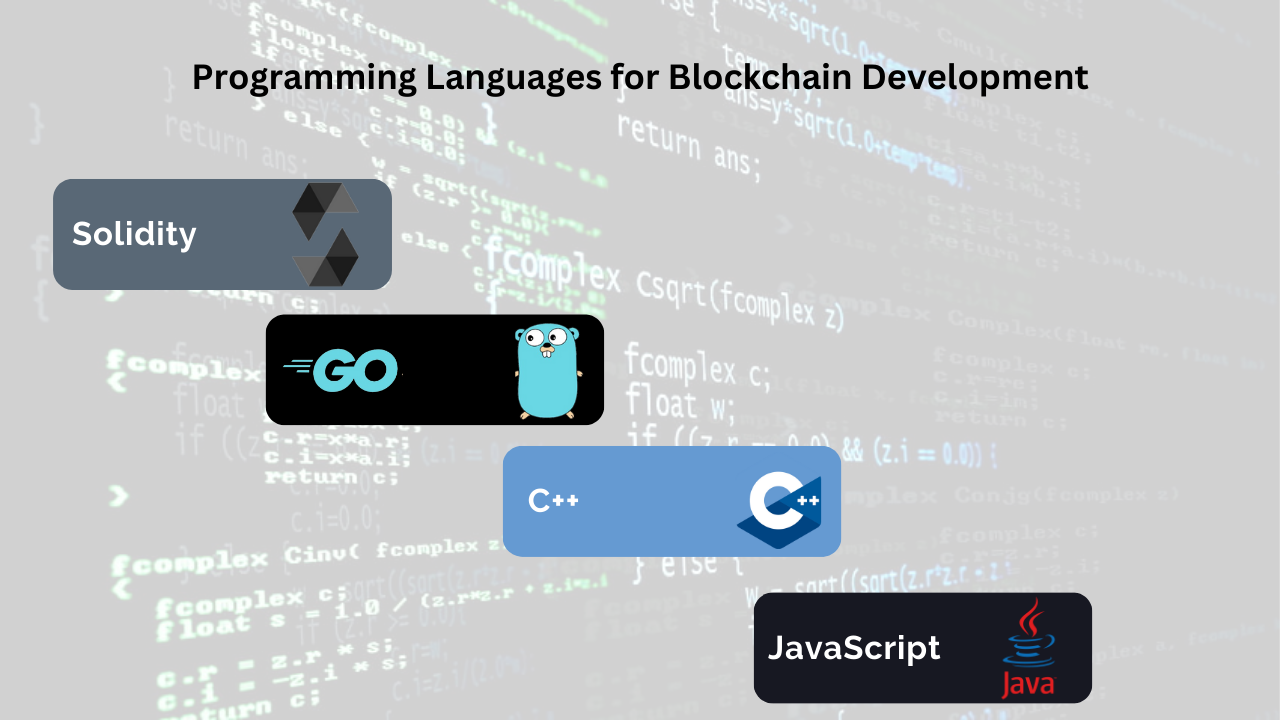
Solidity stands out as the primary programming language for smart contract development on the Ethereum blockchain development. Its syntax is similar to that of JavaScript, making it accessible for developers with web development backgrounds. Solidity is specifically designed for creating secure and efficient smart contracts, making it a go-to language for Ethereum-based decentralized applications.
Go, also known as Golang, is gaining popularity in blockchain development due to its simplicity, efficiency, and strong support for concurrency. Go is the language behind the development of Binance Smart Chain, contributing to its speed and low transaction costs. Its straightforward syntax and performance optimization capabilities make it a compelling choice for blockchain projects.
C++ is a versatile language used in various software development domains, including blockchain. It is favored for its performance and efficiency, making it suitable for the development of blockchain protocols and core functionalities. Bitcoin, the pioneer of blockchain technology, is implemented in C++, showcasing the language's suitability for creating robust and reliable blockchain systems.
JavaScript, a widely used language for web development, extends its reach to blockchain through environments like Node.js. It is often employed for building decentralized applications and interacting with blockchain networks through APIs. JavaScript's ubiquity and ease of integration make it a pragmatic choice for developers familiar with web development technologies.
-
Choosing the Right Language for Your Project
The selection of a programming language should align with the specific requirements and goals of your blockchain project. Consider factors such as the platform you are developing for, the complexity of your application, and the expertise of your development team. This guide assists developers in making an informed decision by outlining the strengths and use cases of each language, ensuring a well-matched choice for successful blockchain software development.
Developing Your First Blockchain Application
Embarking on the journey to create a blockchain application involves several key steps, from conceptualization to deployment. This guide provides a step-by-step approach for developers, covering the crucial phases of designing, coding, testing, and deploying a blockchain application.
-
Designing the Application
Before diving into code, a well-thought-out design is essential. Define the purpose, functionality, and features of your blockchain application. Outline the user interface, data flow, and interactions. Consider the smart contracts that will govern the application's logic. This phase sets the foundation for a coherent and effective development process.
Smart contracts form the backbone of many blockchain application development. Using a language like Solidity (for Ethereum), write the code that governs the rules and logic of your application. This section guides developers through the process of creating secure and efficient smart contracts, ensuring they align with the design and purpose of the application.
-
Integrating Frontend and Backend
The frontend and backend components of your application must seamlessly interact. Develop the front end using web technologies like HTML, CSS, and JavaScript. Connect it to the blockchain through APIs, ensuring a smooth flow of data between the user interface and the smart contracts. Backend development may involve server-side scripting and database integration.
Thorough testing is crucial to identify and rectify any issues before deployment. Test the smart contracts for security vulnerabilities and functional correctness. Conduct frontend and backend testing to ensure a seamless user experience. Utilize tools and frameworks for automated testing where possible. This iterative testing process enhances the reliability and security of your blockchain application development.
-
Deploying the Application on a Test Network
Before deploying on the main blockchain, it's prudent to launch your application on a test network. This allows for real-world testing without the risk of impacting live users or assets. This guide walks through the steps of deploying your application on a test network, ensuring that it functions as intended and providing a final opportunity to catch any potential issues.
By following these steps, developers can navigate the process of developing their first blockchain application with confidence. This comprehensive guide aims to demystify the complexities of a blockchain development company, empowering developers to bring their ideas to life in the decentralized world.
Security Best Practices
Ensuring robust security is paramount in blockchain development to safeguard assets, data, and user interactions. This section outlines key security best practices, covering aspects from smart contract development to network security and user authentication, to fortify your blockchain application development against potential threats.
Smart contracts are susceptible to vulnerabilities that can be exploited by malicious actors. Implement best practices such as code audits, thorough testing, and utilizing established patterns to mitigate risks. Employing tools like static analyzers and following standardized development practices, such as the Secure Software Development Life Cycle (SSDLC), enhances the security posture of your smart contracts.
The security of the underlying blockchain network is fundamental to the integrity of your application. Ensure that nodes are adequately secured, and communication between nodes is encrypted. Regularly update and patch software to address vulnerabilities. Employ firewalls and other network security measures to protect against external threats. Vigilance in monitoring network activity is crucial for identifying and responding to potential security breaches promptly.
-
User Authentication and Authorization
Implementing robust user authentication and authorization mechanisms is vital for protecting user accounts and data. Utilize secure authentication protocols, such as OAuth or OpenID Connect, and employ strong password policies. Authorization mechanisms should restrict access based on user roles and permissions. Implement multi-factor authentication to add an extra layer of security, reducing the risk of unauthorized access.
-
Best Practices for Handling Private Keys
Private keys are the linchpin of blockchain security, and mishandling them can lead to severe consequences. Encourage users to use hardware wallets for key storage and discourage storing private keys on centralized servers. Employ secure key management practices, such as key encryption and secure key storage solutions. Regularly rotate and update keys, and implement robust access controls to limit access to private keys to only those who absolutely need it.
By incorporating these security best practices into your blockchain development process, you can significantly enhance the resilience of your application against potential threats. Security should be an integral part of the development lifecycle, and ongoing vigilance is crucial to adapt to evolving security challenges in the dynamic landscape of blockchain technology.
Scaling Solutions for Blockchain Applications
As blockchain technology continues to evolve, addressing scalability becomes pivotal for widespread adoption. This guide explores various scaling solutions, including on-chain scaling, off-chain scaling, and layer 2 solutions, providing insights into their mechanisms and helping developers choose the right approach for optimizing the performance of their blockchain applications.
On-chain scaling involves modifying the blockchain's protocol to increase its capacity for processing transactions within each block. Larger block sizes and faster block generation times are common strategies. However, this approach may lead to challenges such as increased resource requirements and potential centralization. Understanding the implications and trade-offs is crucial when considering on-chain scaling solutions.
Off-chain scaling addresses scalability by conducting transactions outside the main blockchain. Techniques like state channels and payment channels enable parties to transact privately and swiftly without burdening the main network. While off-chain scaling reduces congestion, it introduces the need for additional trust mechanisms. This section delves into the principles and considerations associated with off-chain scaling solutions.
Layer 2 solutions build upon the existing blockchain but process transactions off-chain or in separate layers, reducing the burden on the main blockchain. Examples include sidechains and rollups. Layer 2 solutions aim to combine the security of the main chain with improved scalability and efficiency. Developers can explore the intricacies of layer 2 solutions and understand how they complement on-chain transactions.
-
Choosing the Right Scaling Solution
Selecting the appropriate scaling solution depends on the specific needs and goals of the blockchain application development company in USA. Consider factors such as the nature of transactions, security requirements, and the desired level of decentralization. This section assists developers in making informed decisions, guiding them through the evaluation of on-chain scaling, off-chain scaling, and layer 2 solutions based on their project's unique characteristics.
As blockchain technology advances, scalability remains a central challenge. Developers must carefully assess the trade-offs associated with different scaling solutions to strike the right balance between transaction throughput, decentralization, and security.
Interacting with External Data
Blockchain applications often require real-world data to execute smart contracts accurately. This guide explores the integration of external data, covering the role of oracles, data feeds, and the intricacies of incorporating real-world information into smart contracts. Additionally, it addresses key security considerations to ensure the reliability and integrity of external data within blockchain applications.
Oracles act as bridges between the blockchain and external data sources. They fetch and verify off-chain information, providing smart contracts with data such as market prices, weather conditions, or any real-world events. This section details the role of oracles, their types (centralized, decentralized, and consensus-based), and the significance of selecting the appropriate oracle solution for reliable data input.
Data feeds serve as a continuous stream of information, supplying real-time data to blockchain applications. These feeds can be sourced from various providers and cover diverse datasets. Developers can integrate data feeds into smart contracts to enable dynamic and responsive functionalities. This part of the guide explores the utilization of data feeds and their role in enhancing the functionality of blockchain applications.
-
Integrating External Data into Smart Contracts
Incorporating external data into smart contracts involves creating secure and reliable mechanisms for fetching, verifying, and utilizing off-chain information. This section guides developers through the steps of integrating external data, emphasizing the importance of secure communication, data validation, and implementing fail-safes to handle unexpected scenarios.
Ensuring the security of interactions with external data is paramount in blockchain development. This part of the guide highlights key security considerations, including data authenticity, oracle manipulation risks, and potential attack vectors. Implementing cryptographic techniques, utilizing reputable Oracle services, and conducting thorough audits are essential practices to mitigate security vulnerabilities associated with external data integration.
As blockchain applications evolve, the need for real-world data integration becomes increasingly prevalent. Developers must navigate the challenges of interacting with external data to enhance the functionality and relevance of their smart contracts. This comprehensive guide equips developers with the knowledge and best practices to securely integrate external data, fostering the creation of robust and reliable blockchain applications.
Regulatory and Legal Considerations
The success of blockchain applications hinges not only on technological prowess but also on adherence to regulatory and legal frameworks. This guide delves into the landscape of blockchain regulations, compliance requirements for blockchain applications, and the pivotal aspect of privacy and data protection in the context of evolving legal landscapes.
-
Overview of Blockchain Regulations
Blockchain technology, though decentralized, operates within the frameworks established by regulatory bodies worldwide. This section provides an overview of the regulatory landscape, addressing issues related to cryptocurrencies, initial coin offerings (ICOs), and the broader spectrum of blockchain-based applications. Understanding regional and global regulations is crucial for developers and stakeholders to navigate legal compliance successfully.
-
Compliance for Blockchain Applications
Blockchain applications must align with existing legal frameworks to ensure legitimacy and minimize legal risks. This guide outlines compliance considerations, addressing issues such as anti-money laundering (AML) and know your customer (KYC) regulations. It also emphasizes the importance of staying informed about evolving regulations, as the legal landscape surrounding blockchain is continually evolving.
-
Privacy and Data Protection
The decentralized and transparent nature of blockchain technology raises unique challenges regarding privacy and data protection. This section explores how blockchain applications can maintain compliance with data protection regulations, such as the General Data Protection Regulation (GDPR). Techniques like zero-knowledge proofs and privacy-focused blockchain platforms are discussed to strike a balance between transparency and individual privacy.
Navigating the regulatory and legal aspects of blockchain is integral to the long-term success and acceptance of blockchain applications. Developers and stakeholders must actively engage with legal experts to ensure their projects comply with relevant regulations, fostering a responsible and sustainable blockchain ecosystem. This guide provides insights into the key considerations, allowing developers to approach regulatory compliance with clarity and confidence.
Future Trends in Blockchain Development
The landscape of blockchain development continues to evolve, reflecting the dynamic nature of technology. This guide explores emerging trends that are shaping the future of blockchain development, focusing on NFT marketplace development, the rise of decentralized finance (DeFi), the intersection of blockchain and the Internet of Things (IoT) and the impact of emerging technologies on the blockchain space.
-
NFT Marketplace Development and Digital Assets
Non-fungible tokens (NFTs) have gained immense popularity, marking a significant trend in blockchain development. This section explores the creation of NFT marketplaces development of digital assets. From artwork and collectibles to virtual real estate, NFTs have expanded the possibilities for creators and investors, ushering in a new era of digital ownership and unique value representation.
-
Decentralized Finance (DeFi) Development
Decentralized Finance, or DeFi, represents a transformative trend in the financial sector. This part of the guide delves into the development of decentralized financial applications that enable peer-to-peer lending, borrowing, and trading without traditional intermediaries. The potential for financial inclusion and innovation in DeFi positions it as a significant focus for blockchain developers in the future.
-
Blockchain and the Internet of Things (IoT) Development
The integration of blockchain and the Internet of Things (IoT) holds promises for enhanced security, transparency, and efficiency in interconnected devices. This section explores the development of blockchain solutions for secure data sharing, device authentication, and decentralized management of IoT ecosystems. The synergy between blockchain and IoT is expected to play a pivotal role in shaping the future of connected devices.
-
Emerging Technologies and Their Impact on Blockchain
The future of blockchain software development is intertwined with emerging technologies such as artificial intelligence, quantum computing, and 5G networks. This guide examines how these technologies may impact blockchain, discussing potential challenges and opportunities. As the technological landscape evolves, staying abreast of these developments is crucial for blockchain developers seeking to innovate and future-proof their projects.
Understanding and embracing these future trends in blockchain development empowers developers to stay at the forefront of technological innovation. From NFTs and DeFi to the intersection of blockchain with IoT and emerging technologies, the guide aims to provide insights that enable developers to navigate and contribute to the dynamic and promising future of blockchain technology.
Conclusion
This comprehensive guide has provided a thorough exploration of key concepts in blockchain development, spanning from the fundamentals of blockchain technology to advanced trends shaping the industry's future. We covered the intricacies of smart contracts, blockchain platforms, security best practices, and the integration of external data. As blockchain development continues to evolve, it brings forth both challenges and opportunities. Challenges include navigating regulatory landscapes and addressing scalability issues, while opportunities abound in NFT marketplaces, decentralized finance (DeFi), and the intersection of blockchain with emerging technologies. For those eager to delve deeper into this dynamic field, resources for further learning include online courses, documentation from blockchain platforms, and engaging with the vibrant hire blockchain developer community. Armed with this knowledge, developers can navigate the complexities of blockchain app development, contribute to innovative projects, and shape the future of decentralized technology.







